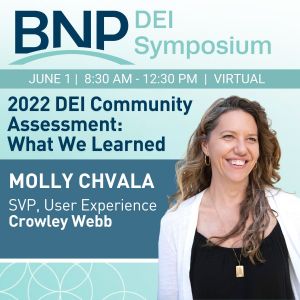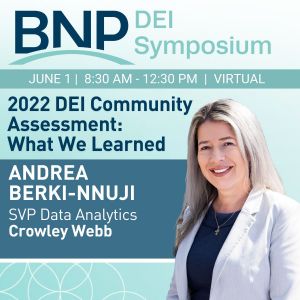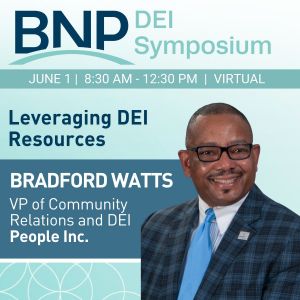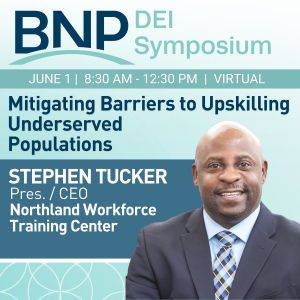Understanding Cultural Humility
September 15, 2022
Blog Categories
Anna-Lesa Calvert to present during D&I Virtual Learning Series
 Cultural humility. The term may be unfamiliar, but it is a critical component to any organization’s diversity, equity, and inclusion efforts.
Cultural humility. The term may be unfamiliar, but it is a critical component to any organization’s diversity, equity, and inclusion efforts.
Anna-Lesa Calvert, Manager of Professional Development and Diversity at Hodgson Russ LLP, kicks off the Buffalo Niagara Partnership’s D&I Virtual Learning Series with her presentation “Building a Culture of Inclusivity through Cultural Humility” on October 6. As a preview, we spoke with Anna-Lesa to better understand why cultural humility is so important.
Can you define Cultural Humility?
There really isn’t a set definition, but I think about cultural humility as the ability to be humble about what you do and don’t know about another culture. It’s about being curious and open to asking questions and learning about others. We’ve talked about cultural competence which promotes communication among people of different backgrounds. Cultural humility takes it to the next level where we recognize there is still much we don’t know and we are intentional in finding out more.
How should employers and employees think about cultural humility?
If organizations want to create environments that are inclusive, cultural humility should be a goal. That means employers should be willing to allow employees and associates to bring their whole selves to work, creating a safe space. It also means co-workers should be curious and interested enough about one another to take steps to learn more.
How does it play a role in everyday work life?
Cultural humility helps create a culture in which everyone feels safe. It requires every employee or associate to do the inner work, in other words, the self-reflection needed to grow and learn. Cultural humility provides a space for learning.
Why is an understanding of this topic important for employers and employees?
If your organization is fully committed to DE&I, you are committed to cultural humility. It is important for employees because it affects how they work together day in and day out, creating a workplace where they can feel safe and comfortable among one another.
Do you have an example of when this made a difference in one's work environment?
One example involves the different holidays celebrated by different cultures. Easter, Ramadan and Passover have recently fallen within the same month and our firm has colleagues who celebrate one or the other. We created opportunities to ask questions and learn about the different holidays. We shared different cultural recipes enjoyed during these celebrations. It allowed us to highlight cultural differences, but it also revealed what connects and makes us all so similar.
Related Posts
2023 DEI Symposium: Meet Molly Chvala, Speaker
The BNP is pleased to welcome Molly Chvala, SVP, User Experience, Crowley Webb, as a speaker for the 2023 DEI Symposium. We will be helping you get to know each presenter, panelist, and moderator in the weeks ahead, leading up to the June 1st event.
2023 DEI Symposium: Meet Andrea Berki-Nnuji, Speaker
The BNP is pleased to welcome Andrea Berki-Nnuji, SVP Data Analytics, Crowley Webb, as a speaker for the 2023 DEI Symposium. We will be helping you get to know each presenter, panelist, and moderator in the weeks ahead, leading up to the June 1st event.
2023 DEI Symposium: Meet Bradford Watts, Speaker
The BNP is pleased to welcome Bradford Watts, Associate Vice President of Community Relations and DEI, People Inc. as a speaker at our 2023 DEI Symposium. We will be helping you get to know each presenter, panelist, and moderator in the weeks ahead, leading up to the June 1st event.
2023 DEI Symposium: Meet Stephen Tucker, Speaker
The BNP is pleased to welcome Stephen Tucker, President & CEO, Northland Workforce Training Center as a Speaker at our 2023 DEI Symposium. We will be helping you get to know each presenter, panelist, and moderator in the weeks ahead, leading up to the June 1st event.




